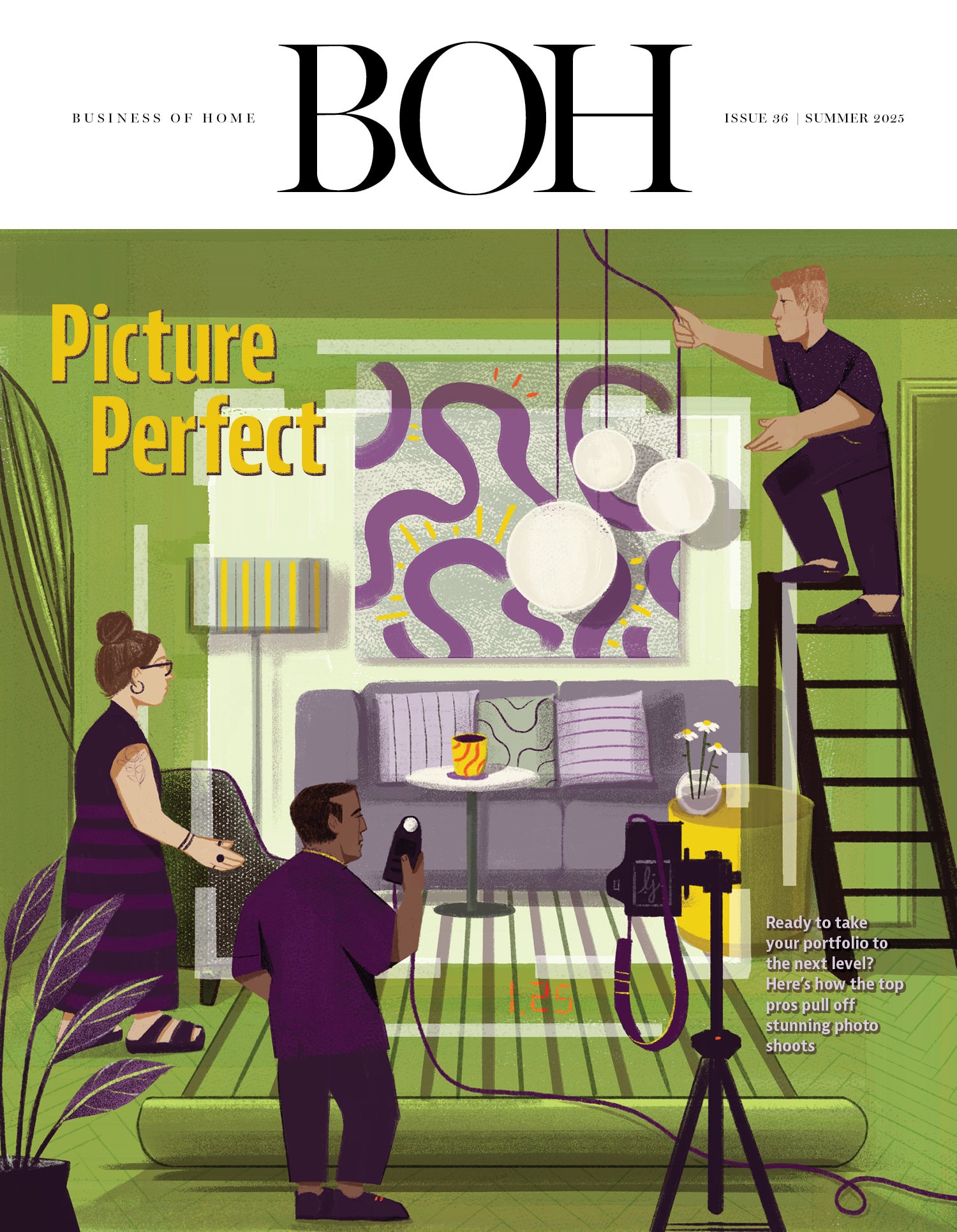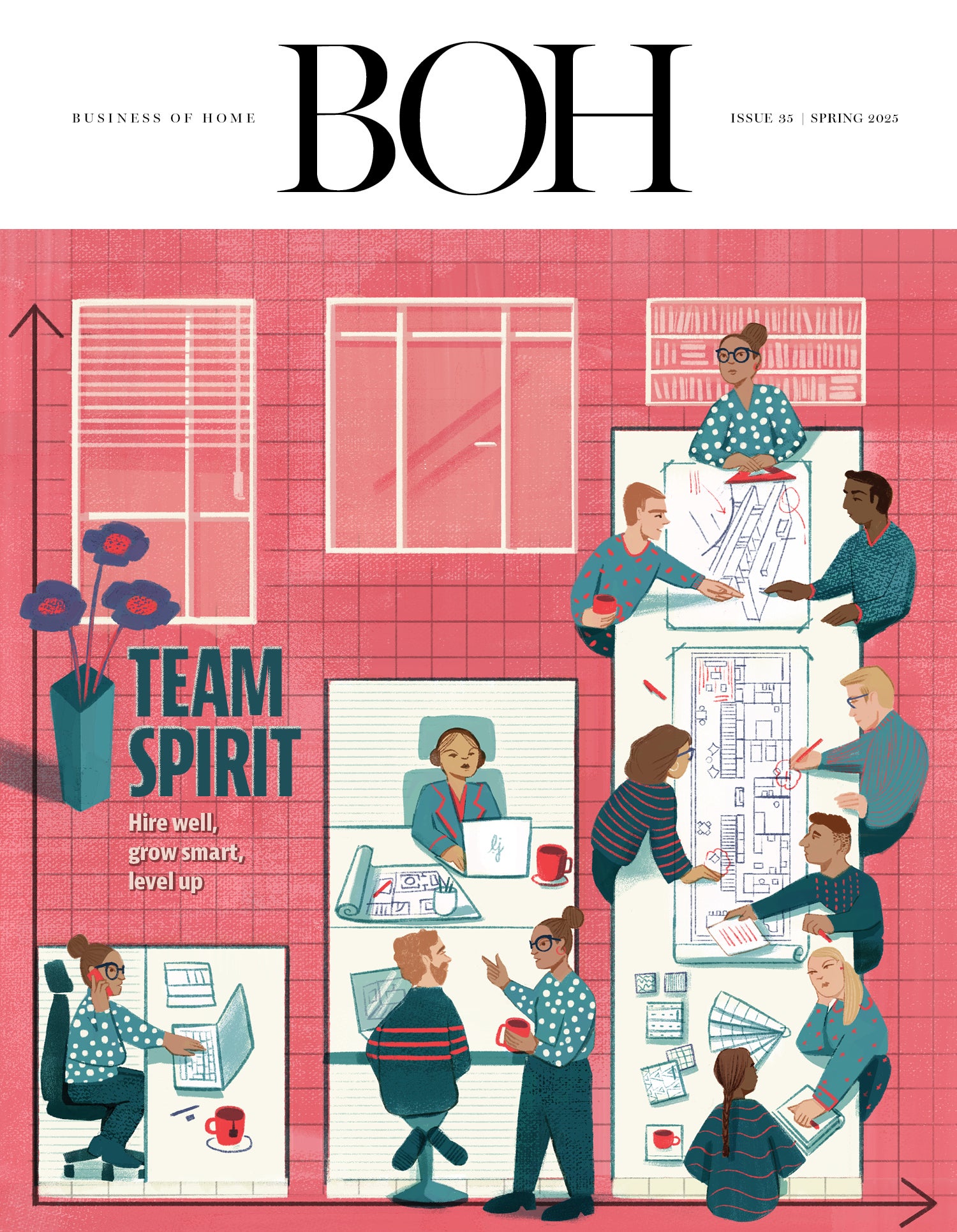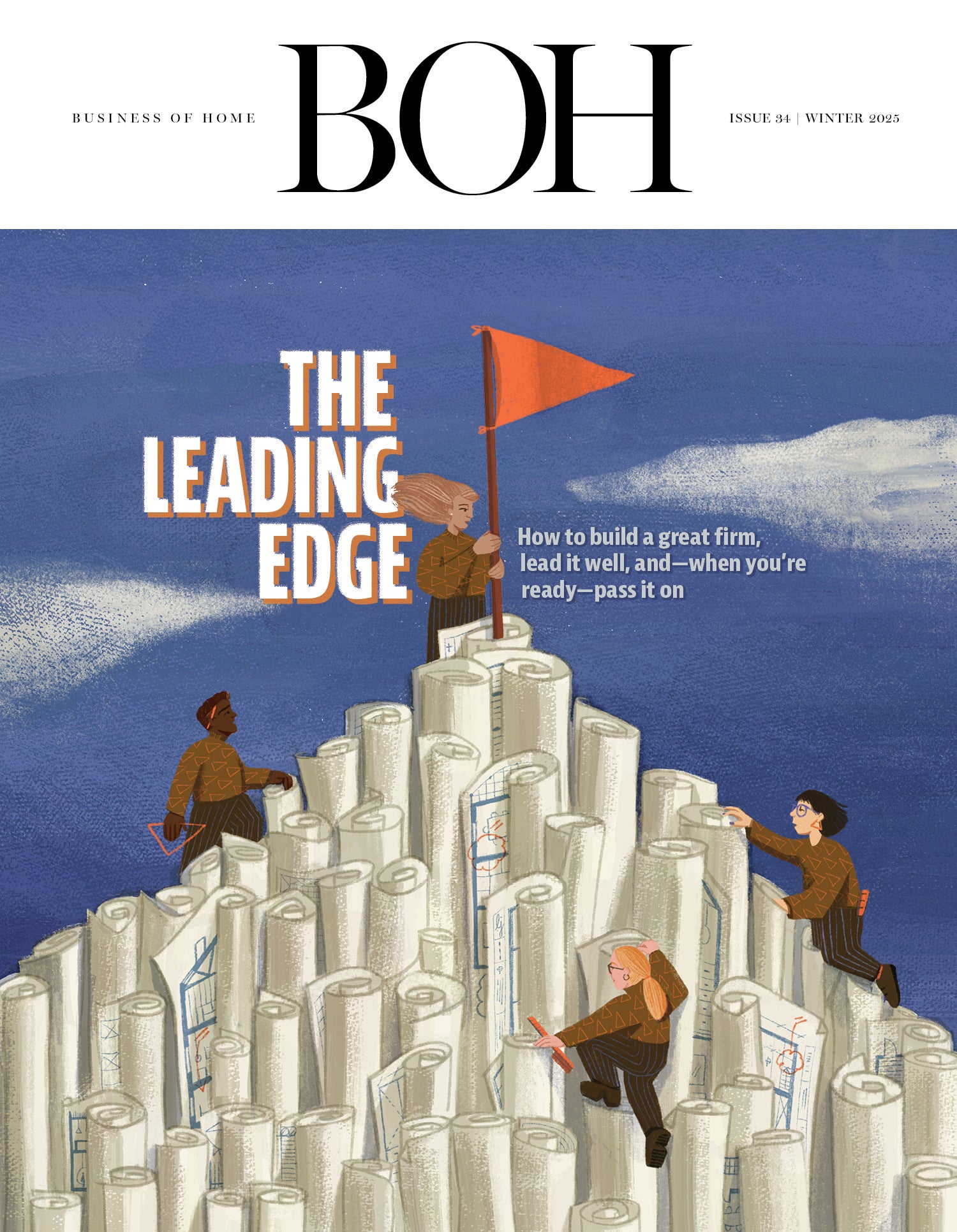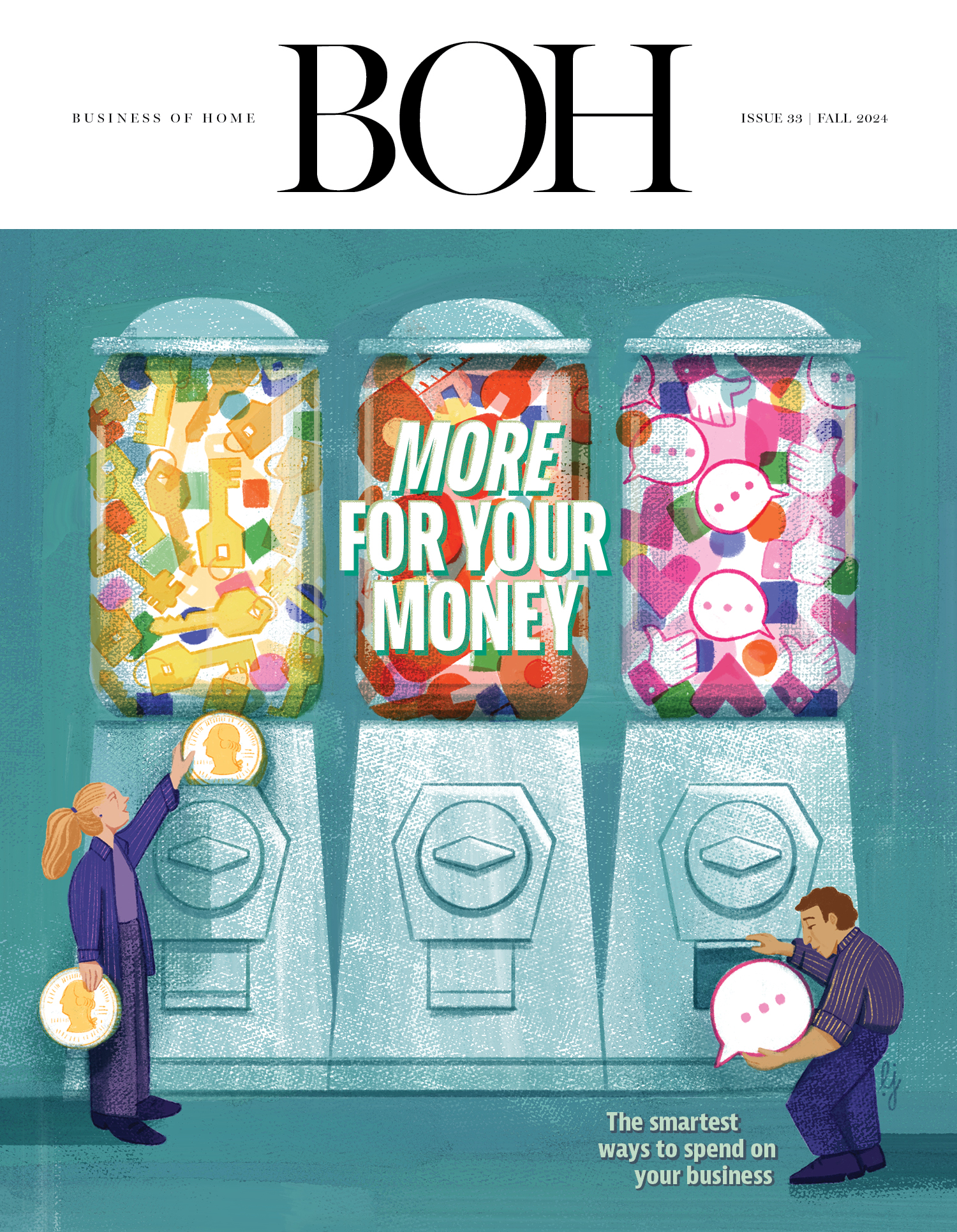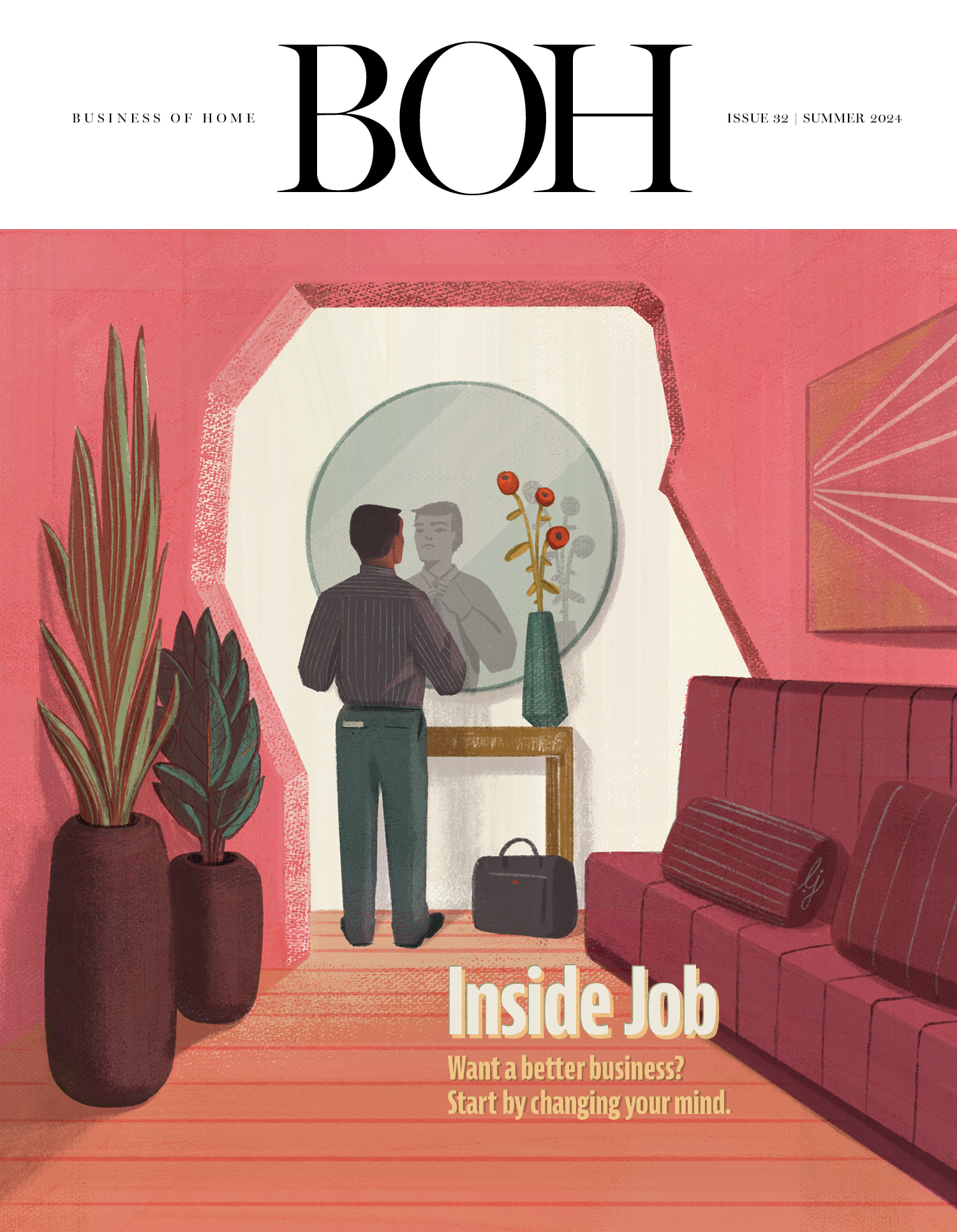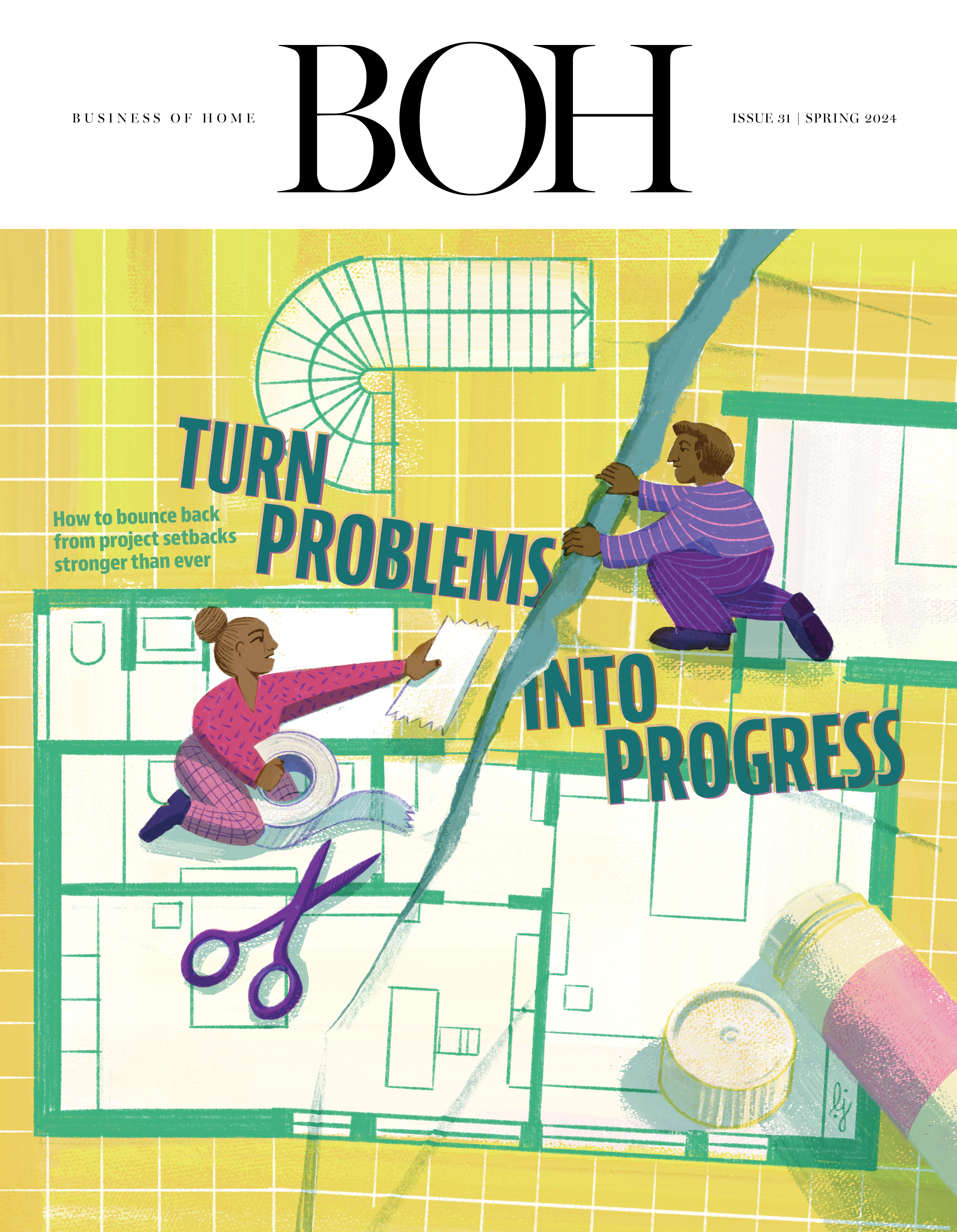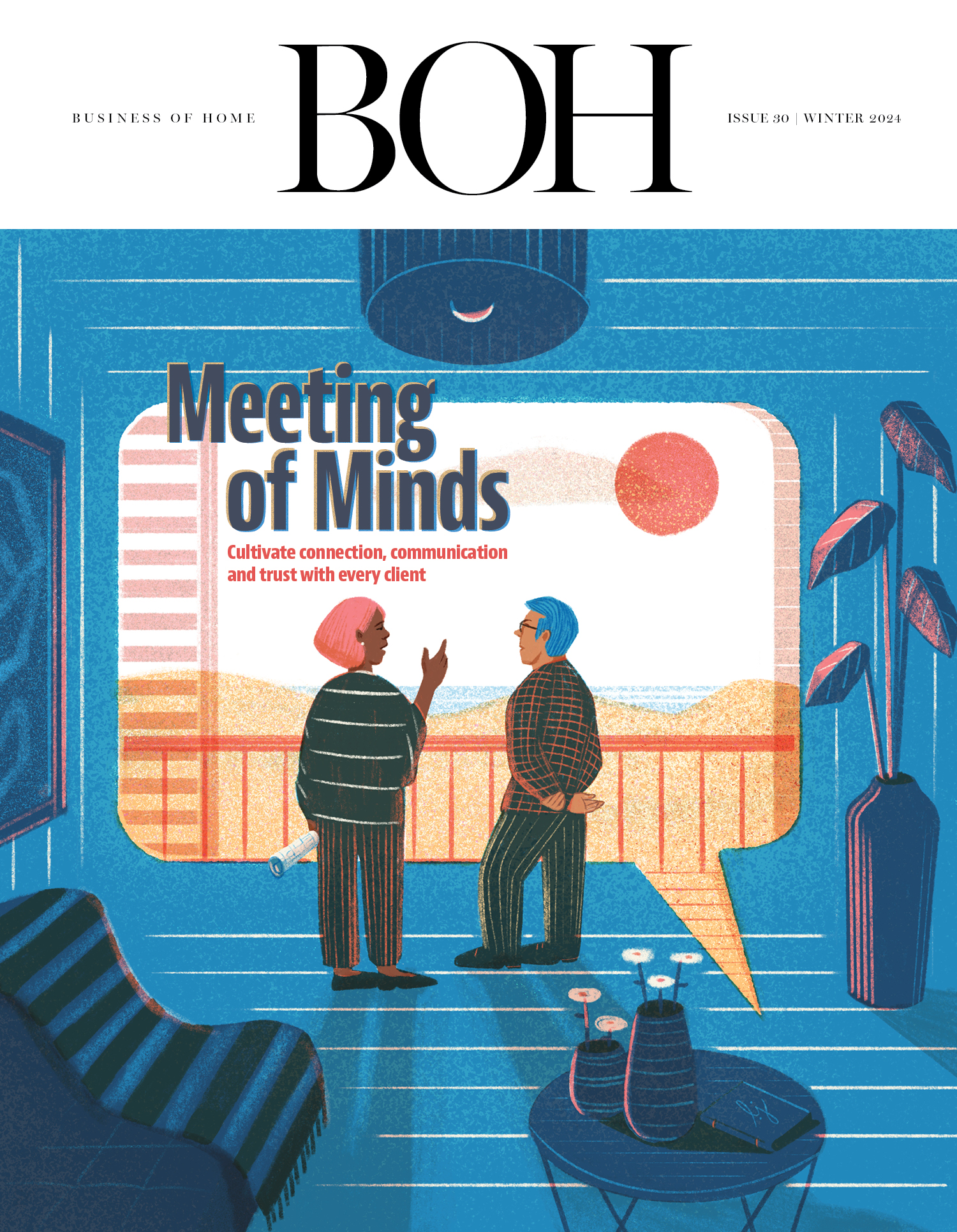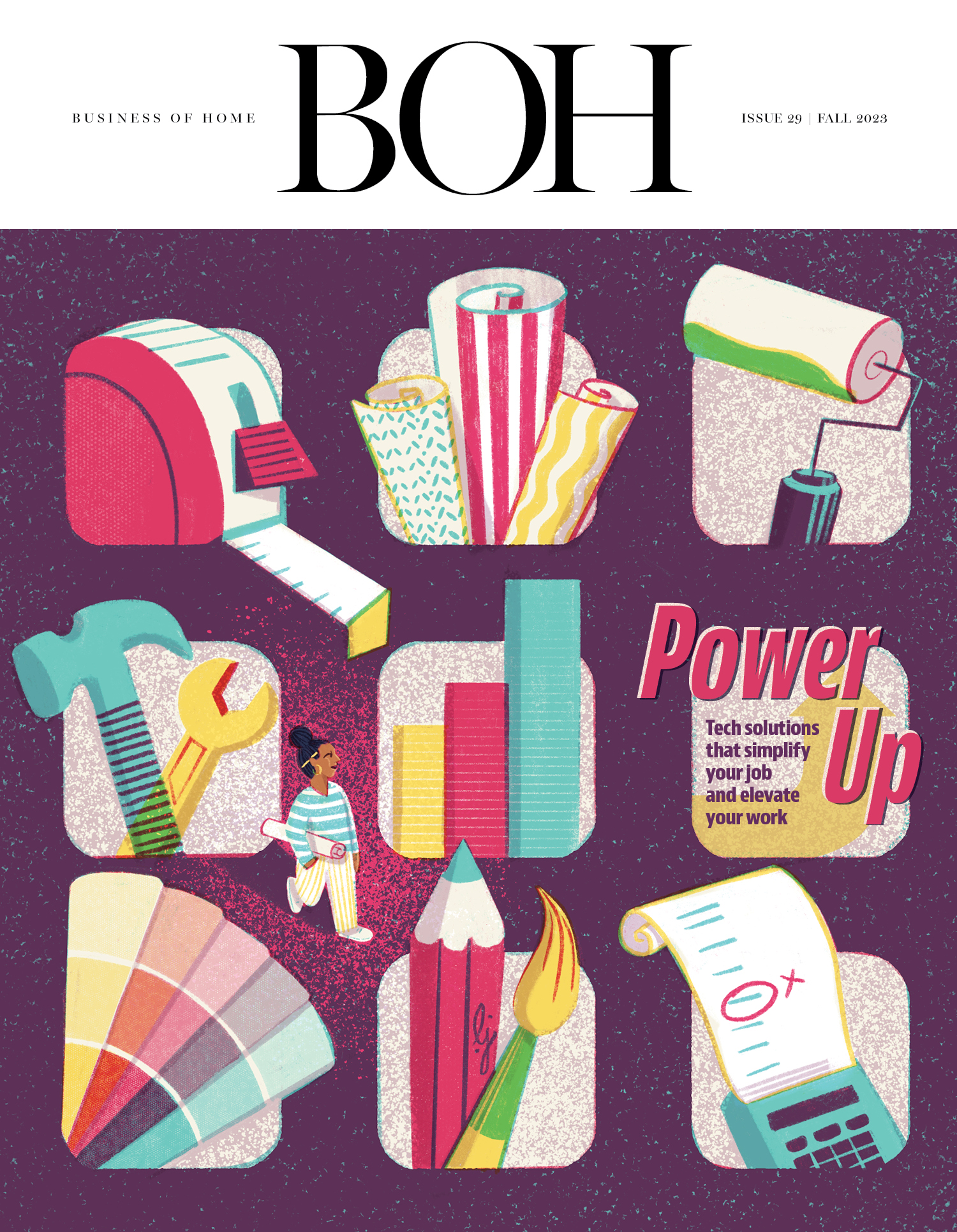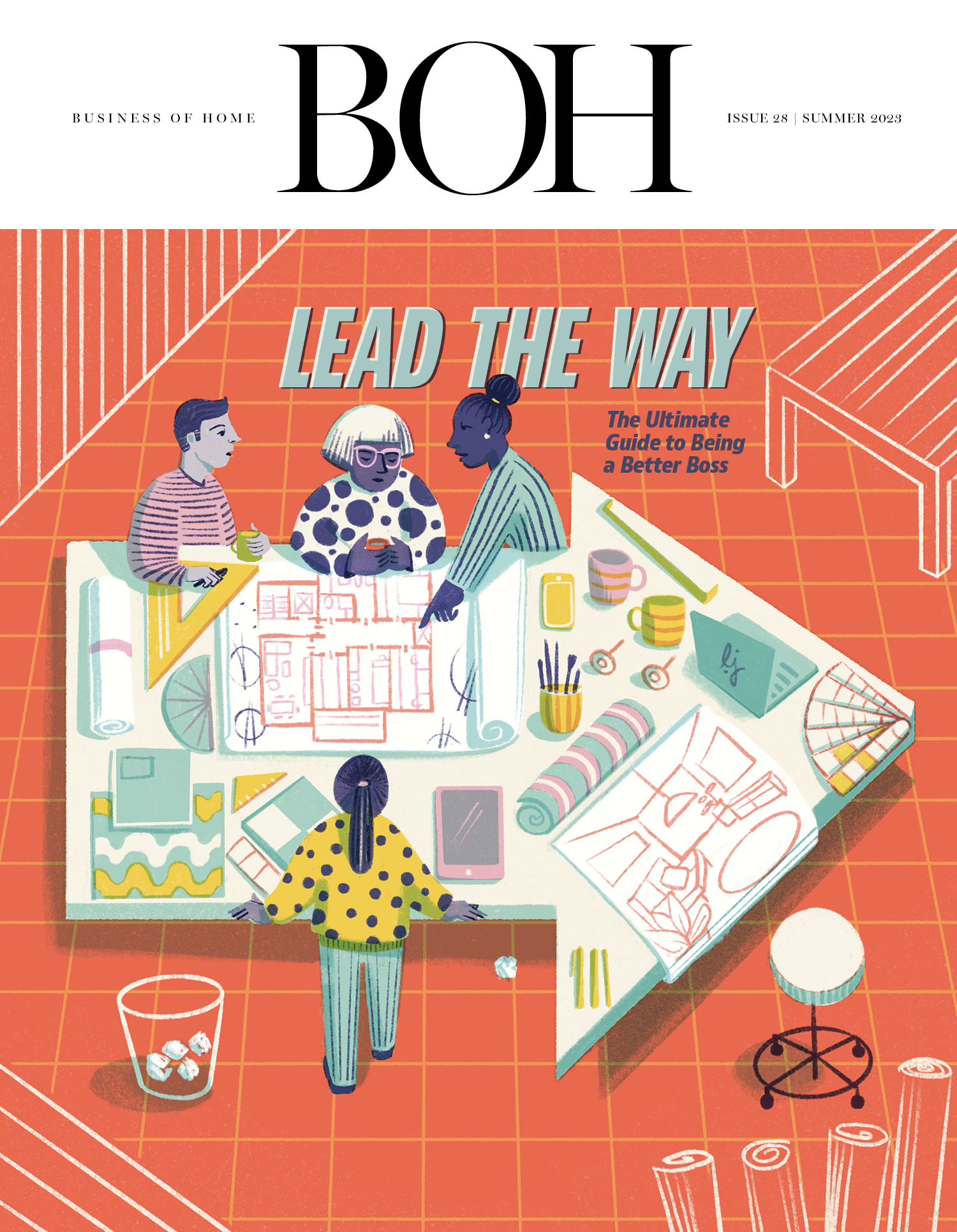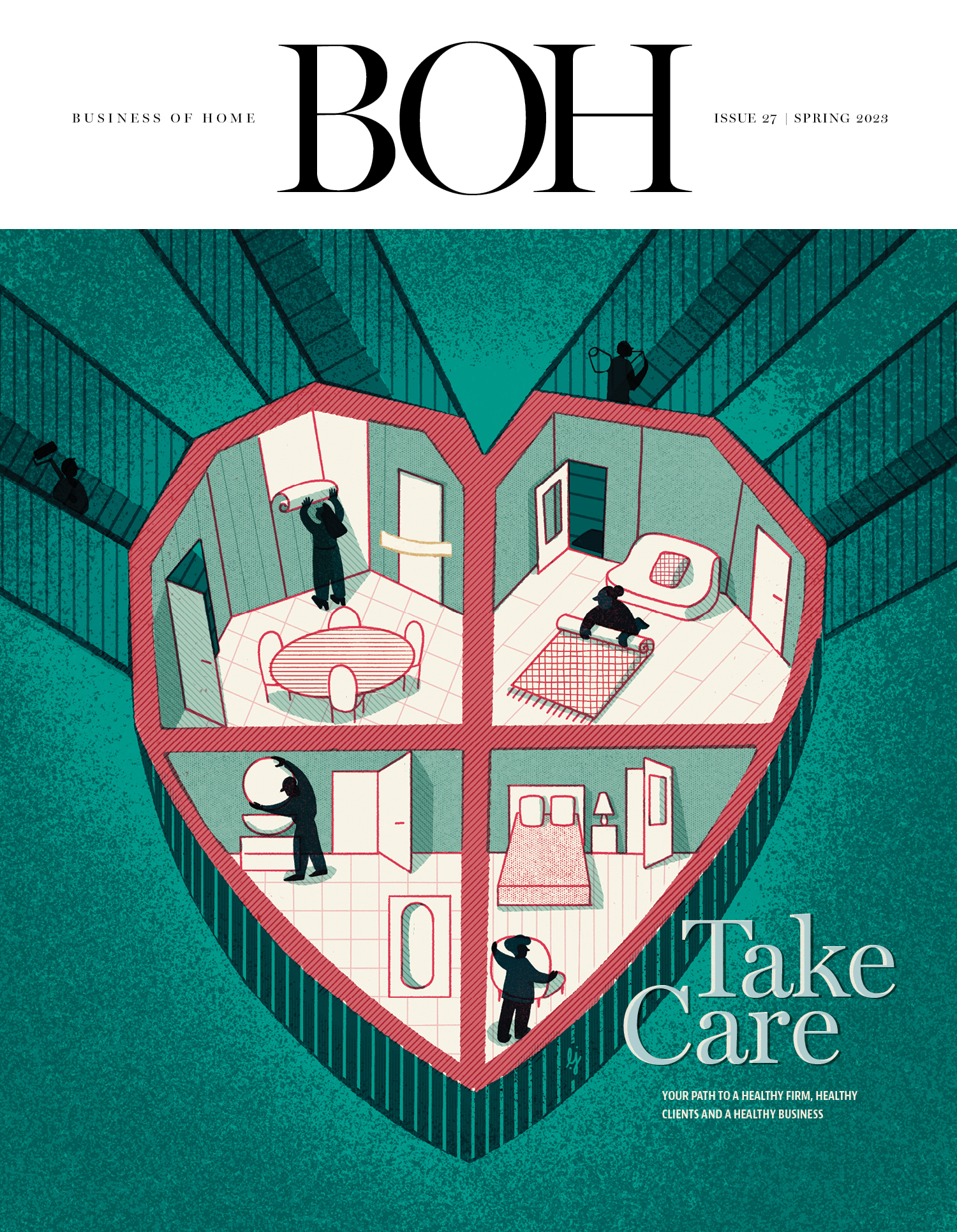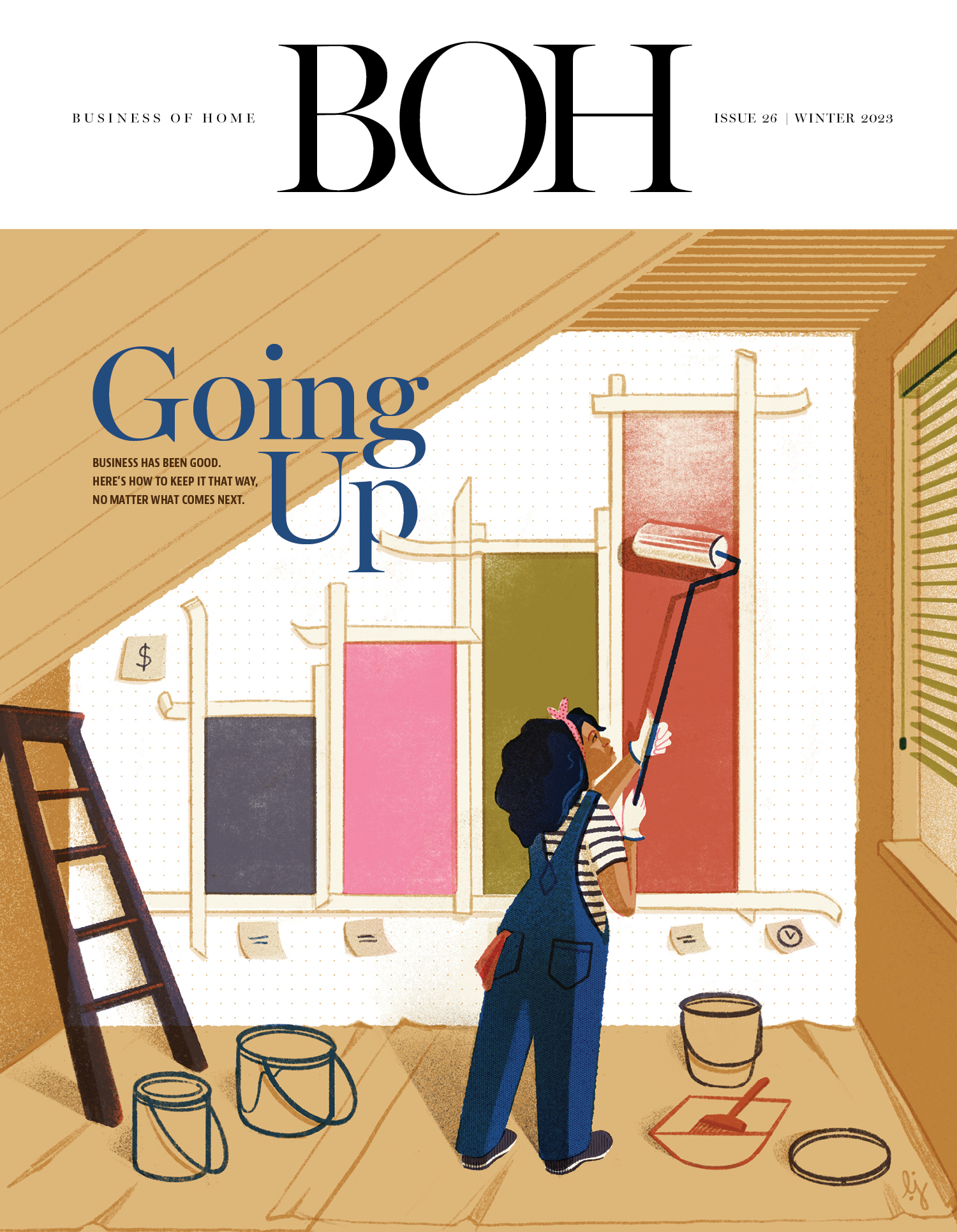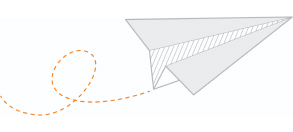June in Copenhagen is not a time to worry. Denmark’s famously harsh winter has melted away, the city’s residents go swimming in the harbor, and restaurants are filled with the bounty of early summer: fat white asparagus, rhubarb and cartoonishly red strawberries. Vibes are good.
So it was last week at 3 Days of Design, Copenhagen’s literally named 72-hour festival dedicated to furniture, fabric, lighting and decor. By day, thousands of attendees wandered the streets, following the trail of pale green balloons that mark the various exhibitions. By night, crowds at Palae Bar—the festival’s unofficial watering hole—jubilantly spilled out into the street, and despite a shaky macroeconomy and geopolitical unrest, the chatter was all design talk, all the time.
Copenhagen is famously a just-right-sized city: not too large, not too small. The same Goldilocks quality carries over to the festival—it’s big enough to feel like a major event, but intimate enough that attendees can walk into a showroom unannounced and reasonably expect to chat with a star designer or CEO. Even the weather—not too warm, not too cold—followed suit this year.
But hovering around the edges of the celebration was a note of anxiety, picked up in snatches of dinner conversation and in passing at showrooms. The fear, in a nutshell, was that the show might soon become a victim of its own success. Or maybe it had happened already: Were there too many visitors this year? Too many big brands? Was 3 Days on the verge of losing its Goldilocks magic, the porridge getting too hot?
The event was born in 2013 in modest fashion, with four Danish brands—Kvadrat, Montana, Anker & Co and Erik Jørgensen—banding together to show their goods in a waterfront warehouse. At the time, it was a tiny fix for a huge hole in the market. Denmark’s prior furniture fair, held in a convention center on the outskirts of town, had shuttered a few years prior, and a great design country had found itself without a design festival.
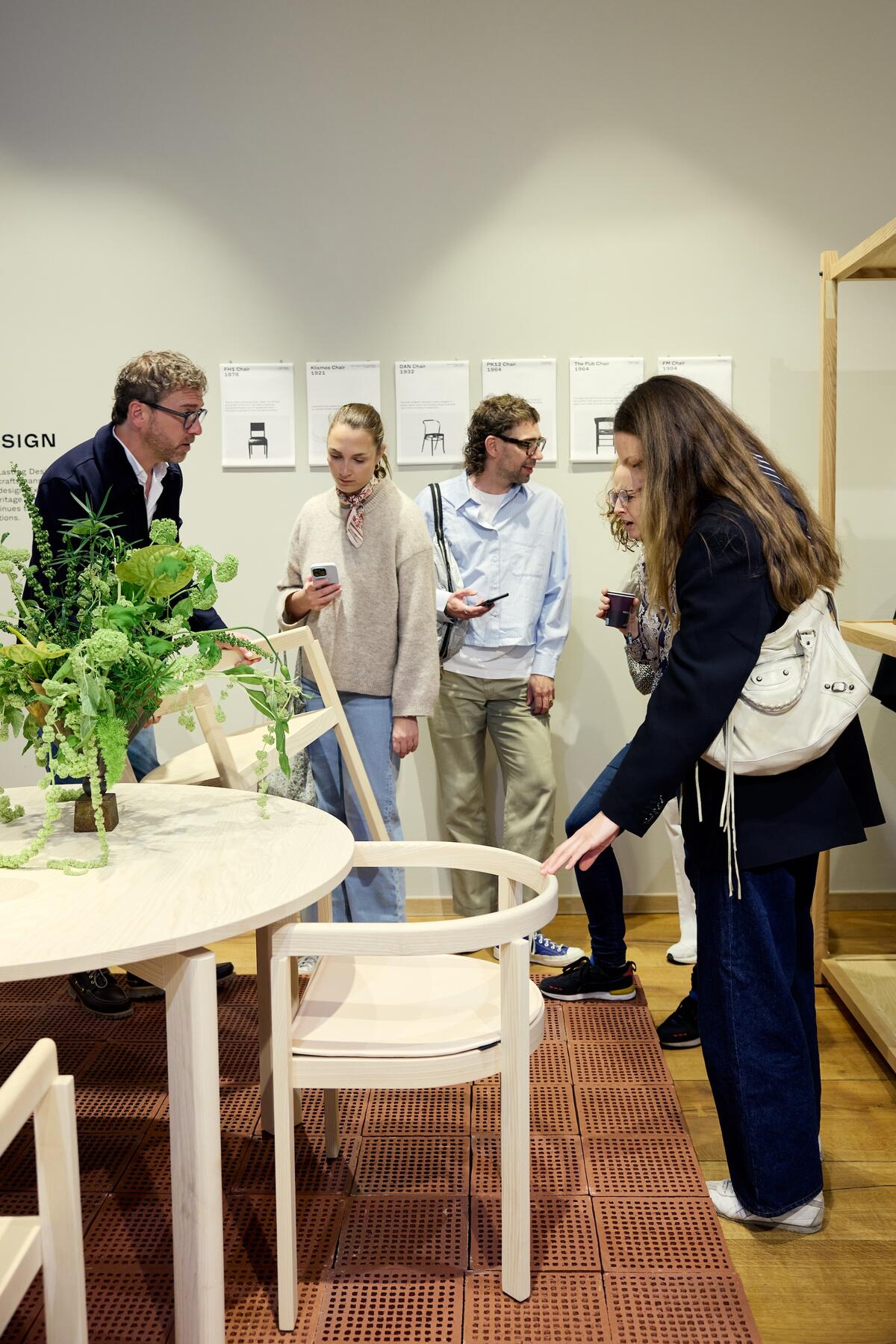
“We lost the Danish fair, and Stockholm had taken the spot as the center of Nordic design,” says Njusja de Gier, Kvadrat’s senior vice president of marketing. “We started it very small, just to get something going here.”
3 Days got some traction and soon spilled out into the city proper. From the beginning, the festival’s organizers sought an egalitarian approach. There are no official tickets—anyone can pop into showrooms and events. The fee to participate as an exhibitor is on a sliding scale, determined by revenue; participating brands also fill out a sizable questionnaire as part of their application, testifying to the originality of their product and their sustainability bona fides.
Unlike most international design festivals, which are typically anchored by a large central fair in a convention center, 3 Days is dispersed throughout Copenhagen’s showrooms, cafes, plazas, gardens and repurposed retail stores. This year exhibitors showed in everything from a former Odd Fellows meeting hall—the festival’s lone “big” venue—to an emptied-out storefront gallery inexplicably filled with sand.
3 Days grew steadily in its infancy, but it wasn’t until Covid that the fair’s popularity surged. In 2021, while much of the world was only cautiously returning to large-scale events, Scandinavia was open for business, and the fair benefited. The following year, Salone del Mobile abruptly shifted its dates from April to June, placing the two shows a convenient week apart. Attendance jumped.
Before the pandemic, the fair hosted under 200 brands. By 2024, that number had grown to more than 400. While 3 Days doesn’t take official attendance, the fair’s managing director, Signe Byrdal Terenziani, ballparks this year’s headcount at 45,000—an enormous leap from that warehouse party a decade prior.
This year saw another jump, with the official exhibitor tally going up to 467—which is likely an undercount, as a single location can host the work of more than one designer. But this edition of the festival may be remembered less for its numbers and more for the inescapable conclusion that 3 Days has shed its status as a plucky regional gem and is now officially an international design festival with serious clout. “You could really feel the high level of buyers, designers and journalists,” says Terenziana. “It’s become a thing worth traveling for.”
Anecdotal evidence would back up that take. The panels were packed with recognizable names, heavy hitters from the retail world were in town, and more than a few design editors could be seen wandering the streets of Copenhagen for the first time, there to see what the fuss was about. (Guilty as charged.)
“The international audience,” said Hay CEO Jesper Brøndum Petersen, when asked what had changed between last spring and this edition. “Last year it was buzzing, and it was primarily Europeans. But I’ve heard a lot of American English in the streets, and we have a lot of people from the APEC region, especially Japan, Korea and Australia.”
Petersen had carved out a minute to chat on the balcony of Hay House, the brand’s retail outpost in the center of town. Hay had taken to running a makeshift restaurant on the third floor of the building to celebrate the festival, and when I visited the space it seemed packed—despite assurances from an employee that this was in fact a relatively quiet time.
For many Danish brands, the festival’s growth has changed how they show up. Hay didn’t officially join in until 2019, but with each passing year, the company has made 3 Days more and more of a priority, increasing the size of its in-house “restaurant” and showing more new stuff. “We want to make a splash,” said Petersen.
The same is true for Denmark’s heritage brands, many of which juggle their roles as stewards of the iconic Danish midcentury designers—Arne Jacobsen, Poul Kjaerholm, Hans Wegner and the like—with a steady rollout of new products by contemporary designers. Brands like Fritz Hansen, Carl Hansen & Son and Louis Poulsen would be debuting their wares to an international audience anyway, but the chance to do it in their native country and on their own terms is enormously appealing.
Fritz Hansen has been participating in 3 Days since 2015 but, like other Danish stalwarts, it has pivoted in recent years to treating the festival as one of its primary venues for debuting new product, which this year included some portable lighting by Danish designer Cecilie Manz (portable lighting was everywhere), an unearthed archival chair by Kjaerholm, and a chair-and-table combo by Cypriot-born, London-based designer Michael Anastassiades.
Just as the fair has an increasingly international base of attendees, the mix of brands is getting more worldly, and their objectives have subtly changed. In the past, a Spanish company might show up at 3 Days hoping to make inroads with designers and dealers in the Scandinavian market. That still happens. But every year there are brands from farther afield looking to debut to a broader European—even global—audience.
“As a new brand, a smaller brand, and a brand in a niche category, we made the conscious decision to come to 3 Days [over Milan] because it felt more manageable,” said Steve Bradley, one half of the married couple behind Australian hardware brand Bankston, which showed in Copenhagen for the first time this year.
Bankston had come to the fair to debut a collaboration with an Australian architecture and design studio, YSG, that made use of naturally colored pink-and-purple wood species for a beguiling checkerboard effect. Though the Bradleys were hoping to connect with European buyers, it wasn’t their only goal—the two had invited press from New York, and were seeing designers from around the world come through their doors. “There’s such a buzz,” added Emily Bradley. “There’s something new happening here and it’s exciting.”
While 3 Days of Design may have started out by competing with the Stockholm Furniture Fair, these days it is more often held up next to Milan Design Week. The two are very different, and a direct comparison is probably unfair to both festivals, but it’s hard to escape the conclusion that the design industry’s embrace of 3 Days has become intertwined with its feelings about Milan.
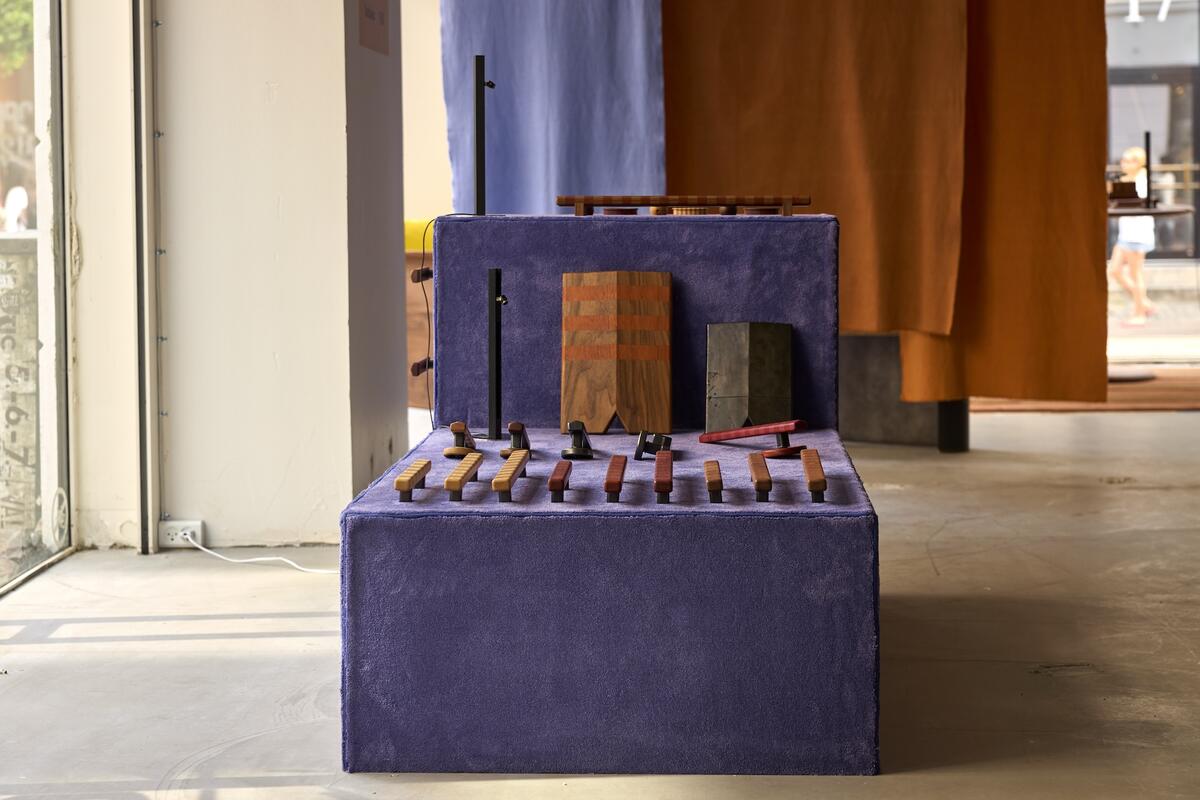
To be clear, Milan is still unquestionably the titan of the international design calendar. The fair regularly draws more than half a million visitors, pulls thousands of exhibitors spread out across the official Salone del Mobile event and Fuorisalone pop-ups around town, and continues to set audience records even after the devastation of Covid. Milan is also crucial for business—for international buyers, it remains the industry’s big tentpole event. (Brands will often debut a product at Salone before bringing it to other shows, including 3 Days.)
But for some observers, Milan’s gargantuan scale is precisely the problem. In recent years, the fair has increasingly fielded activations from fashion brands, automotive companies and big-tech giants. These have made Milan more of a global event, but often at the cost of disillusioning purists, who complain privately (and sometimes publicly) that the event has become more about hype than design.
That growth has also changed the economics of Salone and Fuorisalone, making it more expensive for design companies to show up and make a splash. “In 2018, we did a beautiful installation [in Milan] at Garage 21, and I think I paid around 35,000 euro for that location,” recalls de Gier. “Now Google is in that location, they pay 125,000 euro for the location, and you build the whole exhibition. For the average design firm, I don’t think many will be able or want to pay it.”
During the same period that many were complaining about overcrowding, hype and high prices in Milan, 3 Days gained relevance without losing its perks. Copenhagen isn’t cheap, but the cost of showing at the festival is inexpensive by comparison. There are few lines. The city is easily walkable, and at least for now, influencers seem few and far between.
But hand in hand with favorable comparisons to Milan Design Week comes the fear that 3 Days might suffer a similar transformation. This was a worry I encountered almost everywhere I went. For some it was a distant possibility—an “I hope not!” But at one dinner, another guest made the ominous prediction that we were currently experiencing 3 Days’s “last good year.”
It’s worth noting that there’s something unique about this—the idea that a design festival could get too big. (It’s hard to imagine, for example, a High Point furniture exec worrying that too many designers were showing up for Spring Market.) Yet even among brand CEOs and the festival’s organizers—people who ostensibly stand to benefit economically from the growth of 3 Days of Design—there was a near-universal agreement that too much, too fast would be a bad thing.
It’s difficult to know if this sentiment is unique to Copenhagen and the Danish national character, or simply a byproduct of a distinctly communal experience. But there was a shared sense that the festival was something to be protected, and that the worst thing that could happen to 3 Days would be the arrival of—shudder—the fashion brands.
Gucci didn’t show up, but this year there was some minor agita over the debut of a new exhibition called Other Circle, which was staged outside of the official 3 Days roster. In an interview with Dezeen, one of the exhibition’s directors said that Copenhagen needed more independent actors, and that Other Circle’s leaders “believe that there’s an audience for the design week in Copenhagen to grow beyond the size it’s at right now.”
That Other Circle was put on independently drew some light irritation from 3 Days insiders, as did the fact that its roster went beyond interior design to include the Japanese sportswear brand Asics and Swedish consumer electronics company Teenage Engineering. Even the exhibition’s use of the phrase “design week” was faintly provocative, as 3 Days has historically been the only game in town. There is, technically speaking, no officially sanctioned “Copenhagen Design Week.”
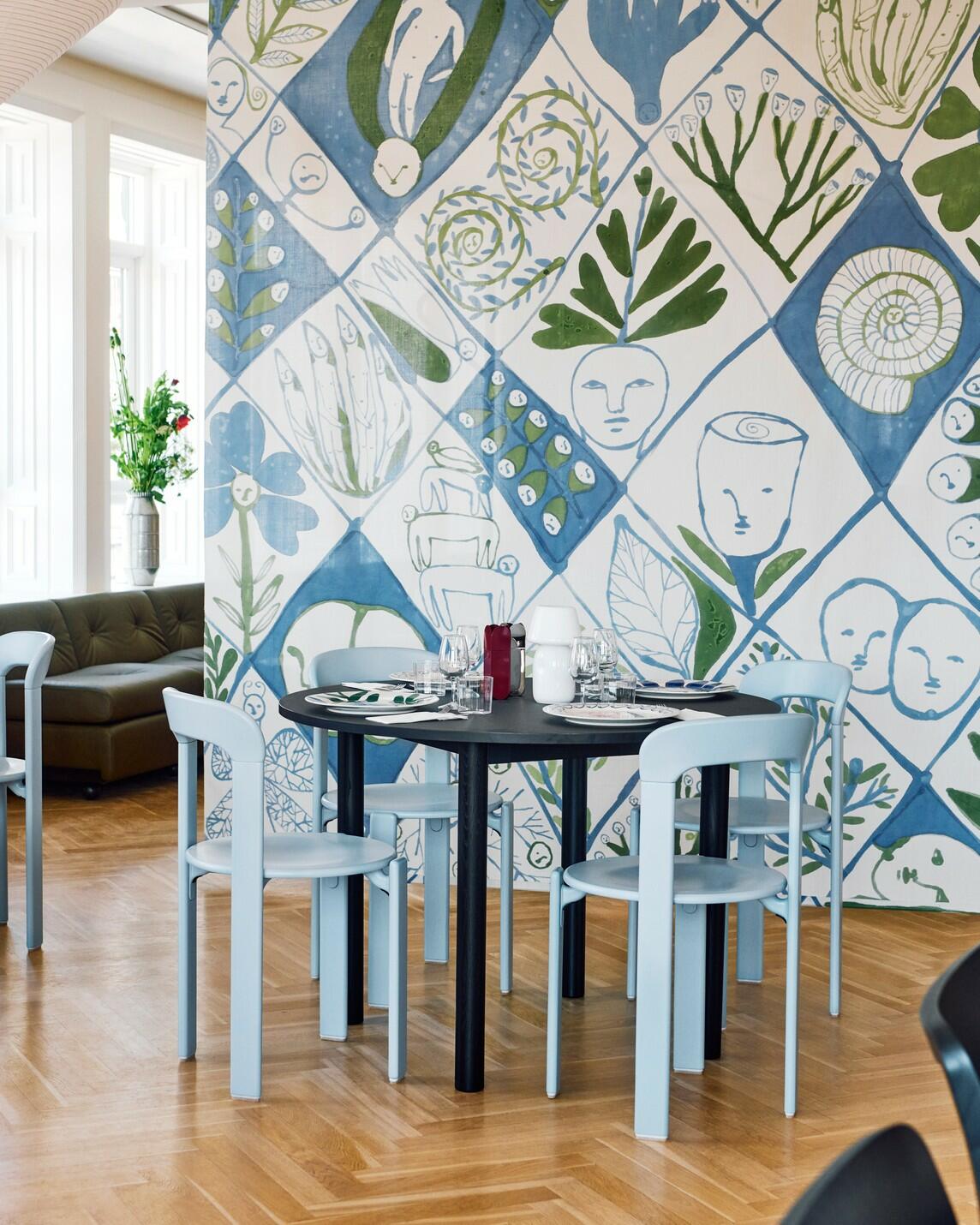
“It’s annoying because it’s confusing for visitors. We have a fashion week, we have an art week, and we have 3 Days of Design. We don’t need to mix it all together,” said Terenziani. “[It comes at the risk of] destroying what’s so beautiful about 3 Days of Design now.”
For Other Circle, the mixing of disciplines is simply part of the appeal. The show’s commercial director, Josephine Winther-Poupinel, made it clear that she and her fellow organizers were fans of 3 Days of Design—but they want to try something new. “We can’t do the same thing that 3 Days can do, but we can do something different,” she says. “What we really want to emphasize is that creativity is everywhere. It’s in the music you hear, the food you taste, the art you see. So gathering that under one roof, we felt, was super strong in defining postdisciplinary creative culture.”
It would be an exaggeration to call the rollout of Other Circle a controversy. But it speaks to the fundamental challenge of keeping a festival like 3 Days in the Goldilocks zone. One of its defining—and maybe best—features is the absence of a big, old-school convention hall. But without deciding who can rent booths, 3 Days can only exert so much control over who shows up and how. This year, it may be newcomers with a different philosophy about interdisciplinary boundaries. Next year, if Dior or Google shows up with a pile of cash, it might be hard for a local landlord to say no.
But, at least for me, this year it did not feel like 3 Days was on the verge of losing its mix of high design and good spirits. On the first day, I stopped for lunch on a street that had been closed off to traffic. A makeshift bar had been constructed, with turntables set up and bouncy disco deployed. Signs for a nearby exhibit advertised—perhaps ironically—a “conceptual exhibition exploring the timeless interplay of form, materiality and the unexpected.” Next to me, a couple sipped beers and talked about Verner Panton. The “last good year” seemed a ways off.




